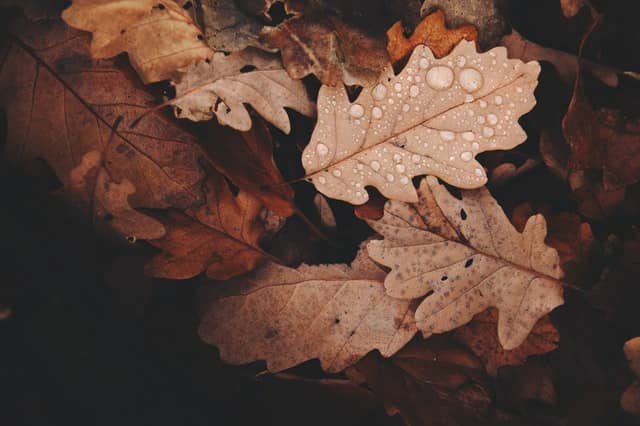Have you got a Brook in your little heart by Emily Dickinson
“Have you got a Brook in your little heart” was written by one of the greatest American poets of the 19th century, Emily Dickinson. This poem is all about the little brook of life. It flows slowly and steadily, suddenly evaporating at the moment of death. The rivulet exists in everyone’s heart that gives out softer emotions. At times, it overflows with powerful emotions. There comes a time when it goes dry due to harsh circumstances. By presenting this picture of a brook, Dickinson beautifully describes the nature of human life, precisely incorporating subjective feelings with a universal theme.
- Read the full text of “Have you got a Brook in your little heart” below:
Have you got a Brook in your little heart (136) by Emily Dickinson Have you got a brook in your little heart, Where bashful flowers blow, And blushing birds go down to drink, And shadows tremble so? And nobody knows, so still it flows, That any brook is there; And yet your little draught of life Is daily drunken there. Then look out for the little brook in March, When the rivers overflow, And the snows come hurrying from the hills, And the bridges often go. And later, in August it may be, When the meadows parching lie, Beware, lest this little brook of life Some burning noon go dry! - from Poems (1890)

Summary
“Have you got a Brook in your little heart” begins with a description of the brook that mildly babbles by. Bashful flowers blow near it and blushing birds come down to drink its water. No one knows its location so it flows undisturbed. Yet, a little draught of life is daily drunk by the speaker without anyone’s attention.
In the last two stanzas, Dickinson describes the impact of the spring and autumn on the rivulet. During spring, it overflows as the snow starts melting. While, in August, the meadows near it become dry, so does the river. So, the speaker warns listeners to take notice of it lest it would go dry.
Meaning
The title of the poem “Have you got a Brook in your little heart” is interesting enough to raise several thoughtful questions in our minds. Firstly, what does the “brook” stand for? Is it a symbol of life or a reference to the soul? To know the answer, one has to focus on the use of specific terms used in the poem. It can be a reference to either life or the soul, residing in our hearts. Indeed, it is like a little brook that remains hidden until one discovers its importance. Hence, in the last stanza, the poet urges readers to be aware of the “brook of life” or it would go dry in some burning noon.
Form, Rhyme Scheme, & Meter
“Have you got a Brook in your little heart” consists of four quatrains or stanzas having four lines each. Dickinson uses the ballad rhyme scheme that is ABCB. It means the second and fourth lines rhyme together. For example, in the first quatrain, “blow” rhymes with “snow”. Similarly, in the last stanza, “lie” and “dry” rhyme. Concerning the meter of the poem, it also imitates the ballad meter, alternative use of iambic tetrameter, and iambic trimeter. Let’s have a look at the scansion of the first stanza in order to understand the overall metrical scheme.
Have you/ got a brook/ in your lit/-tle heart,
Where bash/-ful flow/-ers blow,
And blush/-ing birds/ go down/ to drink,
And sha/-dows trem/-ble so?
Poetic Devices & Figurative Language
Dickinson makes use of a number of poetic devices that include the following ones.
- Rhetorical Question: The first stanza of the poem is written in the form of an interrogation. Here, Dickinson asks her audience if they have got a little brook in their hearts.
- Metaphor: Dickinson uses the term “brook” as a metaphor of the soul. It is compared to a rivulet that flows unseen.
- Alliteration: It occurs in “blushing birds”, “down to drink”, “so still”, “yet your”, “daily drunken there”, etc.
- Anaphora: It is used in lines 3-4 and lines 11-12. These lines begin with the word “And”.
- Personification: Dickinson uses personification in “bashful flowers”, “blushing birds go down to drink”, and “the snows come hurrying from the hills”.
- Rhetorical Exclamation: The last two lines of the poem contain a rhetorical exclamation. These lines sound like a warning to readers.
Line-by-Line Critical Analysis & Explanation
Lines 1-4
Have you got a brook in your little heart,
Where bashful flowers blow,
And blushing birds go down to drink,
And shadows tremble so?
The title is the very first line of the poem. It introduces readers to an interesting concept. Dickinson locates a brook in everyone’s heart. It is not clear whether the poet asks this question to herself or her readers. Whatsoever, through this metaphorical reference, it becomes clear that the “brook” is nothing but the soul. Besides, the usage of the term “little” creates an ironic effect in this line.
In the following line, Dickinson’s poetic persona refers to the “bashful flowers” that blow near the brook. The phrase “bashful flowers” contains a personal metaphor. Here, the inanimate “flowers” are invested with the idea of being shy.
The next line contains another personification. According to the speaker, the birds are too shy to go down and drink from the brook. The presence of this secret brook in one’s heart makes the creatures shy of the fact that they are entering one’s deeply personal space. None has access to that spot except them.
In the last line, “shadows” are a symbol of ignorance. Here, the poet refers to spiritual ignorance. The reflection of an object on water trembles due to the motion of the water. The human mind is always in a state of restlessness. Only spiritual knowledge helps them to calm their mind, resulting in the stillness of the water.
Lines 5-8
And nobody, knows, so still it flows,
That any brook is there;
And yet your little draught of life
Is daily drunken there.
Nobody knows the location of this metaphorical brook. It is always there, yet difficult to notice. The brook flows at its silent pace. That’s why none can hear its sound or notice its presence. In humans, the soul similarly lies silently. With deep self-knowledge, a person realizes its presence.
In the following lines, the poet interestingly says that one drinks the “draught of life” from this river daily without even knowing the fact. It means that the soul is the source of inspiration for living. One daily takes recourse to this source unknowingly. Those little draughts of life act like a magical potion having the properties of healing and restoration. It heals our weary minds and keeps our bodies alive.
Lines 9-12
Then look out for the little brook in March,
When the rivers overflow,
And the snows come hurrying from the hills,
And the bridges often go.
In the third stanza, Dickinson talks about the effect of seasonality on the brook. She describes how in March the brook changes. In spring, snow starts to melt. The excessive water makes the rivers overflow. In these lines, the poet uses visual imagery to depict the flow of the river. She also uses kinesthetic imagery in order to depict the hurrying motion of the rivers. The snow coming down from the hills raises the water level. As an effect, it goes above the bridge that was used for crossing the river in winter.
Through this section, the poet describes the most fruitful moment of a person’s life. If life in its prime is a river of spring, the excessive amount of water is a metaphor of creativity and success. It seems that the poet is talking about her own life. She might be describing the time when she produced her most excellent works.
Lines 13-16
And later, in August it may be,
When the meadows parching lie,
Beware, lest this little brook of life
Some burning noon go dry!
In contrast to the scene of spring, autumn brings a new kind of change to the brook. It is both depressing and alarming. Dickinson uses the impact of these seasons in order to describe life as a whole.
In the month of August, the meadows near the brook lie parched due to the dryness and heat. This image hints at the last phase of a person’s life when her creative energy starts to fade.
In the last two lines, Dickinson advises readers to take cognizance of the change occurring in life’s brook. It is up to us how we deal with change. In the last line, she uses a metaphor in “burning noon”. It is a reference to the harsh ordeals of life.
There are moments in our lives when we lose hope. As a result, the brook dries up. In order to keep it alive, we should never lose hope. So, being attentive to change happening to the mind/soul and taking care of it, is one of the learnings that readers can take from this poem.
Historical Context
The poem “Have you got a Brook in your little heart” appears in Emily Dickinson’s Poems. It was written in 1859 and published in 1890. From the timeline of the poet’s works, it can be inferred that the poem was composed before 1861. According to scholars, Dickinson fully developed her themes of life and mortality after 1861. Prior to that, Dickinson wrote sentimental and conventional lyrics. In this poem, Dickinson’s ideas revolve around life and spirituality. She describes the mind/soul as a brook that flows silently within our hearts. We need to take care of it or it will go dry.
Questions & Answers
Emily Dickinson’s “Have you got a Brook in your little heart” is all about the human mind or the soul. Dickinson describes it as an unseen brook that flows within our hearts. It supplies energy to our spirit constantly until it gets dry in the scorching heat of life. Hence, the poet draws our attention to the change happening internally.
It is a ballad, consisting of four quatrains. It is spoken from the perspective of a first-person speaker who directly addresses the readers.
The “draught of life” supplies energy to our weary spirit. It energizes our hearts and rejuvenates them with new vigor.
The flowers bashfully nod their heads by the brook. While the blushing birds come down and drink from the brook.
This poem taps on themes of life and spirituality. Dickinson describes our mind or soul as a silent river flowing silently down our hearts. She beautifully captures its beauty and the impact of seasonal change on it.
Similar Poems about Life & Change
- “The Nightingale” by Sir Philip Sidney — This piece describes the poet’s sad heart and how the month of spring heightens his passion.
- “Talking in their Sleep” by Edith M. Thomas — This poem is about seasonal change and its impact on life.
- “Our revels now are ended” by William Shakespeare — This best-known soliloquy from Shakespeare’s The Tempest talks about life and death.
- “A child said, What is the grass?” by Walt Whitman — This piece explores the cycle of life and death.
External Resources
- Full text of Poems (1890) — Explore more poems from Dickinson’s first collection.
- Poetry of Emily Dickinson — Learn about the poems of Dickinson and their themes.
- Characteristics of Dickinson’s Poems — Read this article to know more about the form, tone, and style of her poems.
- About Emily Dickinson — Learn about the poet’s life and her works.
- Poet Profile & Poems of Emily Dickinson — Explore more about the poet and read her best-known poems.






